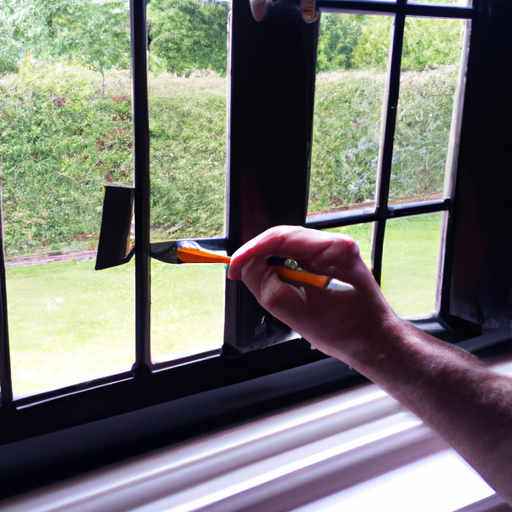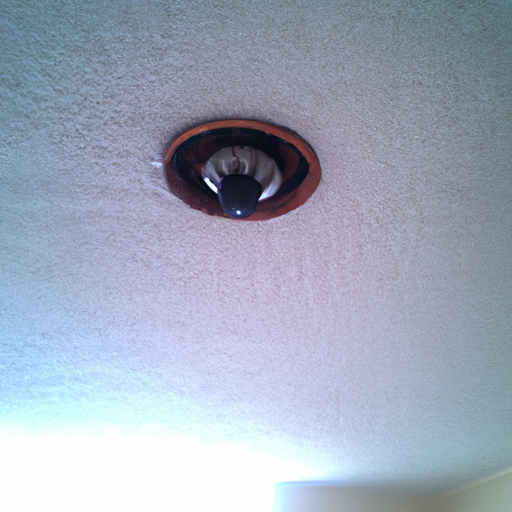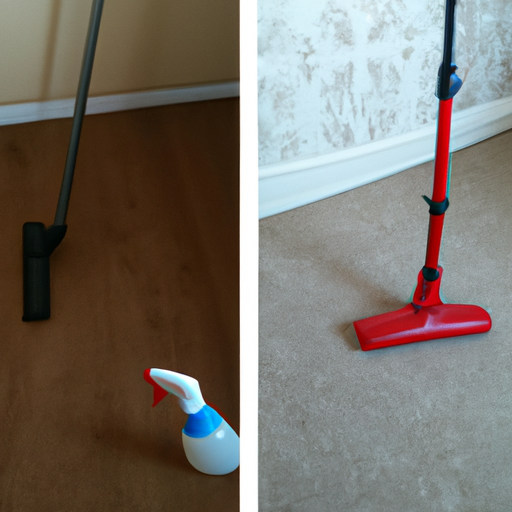
Painting and Cleaning Window Frames: A Practical Yeovil Guide
Did you ever look at a worn timber window frame and think it could use a fresh coat, but also a good scrub? So did I, especially after a damp Yeovil morning when the timber really shows its age on those old terraces off a quiet street near the town centre. Window frame painting and cleaning isn’t just about making things look nice; it’s about protecting the wood from Somerset’s weather and keeping the seals happy. And yes, I’ll spill a few local tips from years of working in Yeovil and nearby spots like Sherborne, Crewkerne, Ilminster, Martock and Somerton.
Why clean and paint window frames together (and why it matters in Yeovil)
If you want windows that stay bright and frames that resist rot, cleaning is part of the job you can’t skip. Dust, pollen in spring, bird splashes, and rain salt from coastal breezes can all cling to the frame surface. If you paint straight over dirt or damp wood, the finish won’t last and you’ll be back at square one sooner than you’d like. And here in Yeovil, with the South West climate’s damp seasons, proper prep saves time and money in the long run.
For a thorough approach, I’ve learned that cleaning before painting is half the job. If you want a step‑by‑step plan, check out Master Window Frame Cleaning: Practical Tips for Yeovil, Somerset. It covers scraping, brushing, and choosing the right wash so you don’t push dirt into the wood.
If you’re curious about eco-friendly ways to keep things sparkling, we also lean on methods discussed in Eco-Friendly Window Cleaning Methods for Somerset Homes in Yeovil.
And if your frames are historic or listed, you’ll want to consider the advice in Preserving Historic Yeovil Windows: Practical Care Guide. Historic timber needs special care when cleaning and painting to protect detail and avoid warping.
If you’re reading this and thinking, “I’d rather someone else did this,” remember we offer reliable window cleaning services in Yeovil. You can learn more about us on the homepage, or browse the blog for related topics here.
Getting the timing right: seasons, weather, and Yeovil’s climate
Somerset enjoys a milder climate than much of the country, but that doesn’t mean the weather won’t throw you a curveball. In Yeovil, damp winters can leave frames a touch soggy, while late spring and early summer bring pollen, birds and occasional heat that can affect drying times. My rule of thumb is to plan exterior painting during a stretch of settled weather, ideally in late spring or early autumn when temperatures sit around 10–20°C and there’s less rain threat for a week or so. The paint will dry more evenly and you’ll get a better finish on the grain.
During autumn, fallen leaves trap moisture and can stain frames if you don’t clear debris promptly. In winter, frost or condensation on edges can ruin a paint job if you try to coat damp timber. So, I always check for a few consecutive dry days before starting, and I work on surfaces sheltered from prevailing winds whenever possible. If you want a handy seasonal checklist, you’ll find one in related posts on our blog page the blog.
In nearby Sherborne, Crewkerne, Ilminster, Martock and Somerton, similar weather patterns apply—so the same prep basics hold true across the region. The key is scheduling around dry spells and giving the wood a full dry-out before primer goes on.
Materials and methods: what to use and what to avoid
There are two main routes for frame painting: timber frames with traditional paint systems and modern UPVC frames that only need a special treatment for the finish. Here’s what I typically consider for Yeovil homes.
- Timber frames (exterior): Clean, repair any rot or loose fibres, sand lightly, then prime with an exterior oil-based or water-based stain-blocking primer, followed by a flexible external gloss or satin finish. The two‑pack is overkill in most homes; a durable water-based acrylic is often enough in the South West.
- UPVC frames: Clean thoroughly with a multisurface cleaner, rinse, then use a dedicated UPVC primer or paint that adheres to plastic surfaces. You’ll usually need fewer coats, but the key is a clean, dry surface.
- Paint choice: Look for exterior-grade acrylic or alkyd enamel for timber. For a traditional look on period homes, you might choose a slightly off-white or sage green to match local aesthetics. And don’t forget primer; it’s essential for adhesion and to prevent tannin bleed from oak or pine.
- Tools: Quality synthetic brushes for acrylics, a small angled brush for corners, a long-handled roller for larger frames, and a scraper or sander for prepping edges. A dust sheet, a masking tape for glass, and a non-slip ladder are standard kit here in Yeovil.
- Finishes: Aim for a finish that resists chalking and UV fade but remains flexible enough to cope with wood movement. Satin or low-sheen options are practical for window frames because they mask dirt a bit better and are easier to wipe clean.
If you want a compact guide to frame cleaning and painting in one go, our earlier post on frame cleaning and maintenance covers prep and issue‑spotting in more detail. It’s a handy read before you buy your paints: Window Frame Cleaning and Maintenance.
A practical, step-by-step plan you can follow
- Inspect and note repairs. Look for rot, loose joints, or cracks. If there’s deep rot, a professional repair may be needed before painting. 2) Choose the right day. A dry day with mild temperatures is ideal. 3) Remove furniture and cover nearby sills with cloths. 4) Clean surfaces thoroughly. Use a non‑abrasive cleaner and a stiff brush to remove mould, algae, or flaking paint. 5) Rinse and dry completely. This can take a few hours on a damp Yeovil day, so plan accordingly. 6) Sanding and repairs. Lightly sand glossy surfaces to improve adhesion, repair any damaged timber with epoxy fillers if needed, then wipe away dust. 7) Prime. Apply a stain-blocking primer or exterior undercoat. 8) Paint. Apply two thin coats rather than one thick coat for a more durable finish; allow adequate drying time between coats. 9) Finish and seal. If you’re using an oil-based finish, ventilate well; for water-based products, ensure you’re indoors during the final cure window. 10) Maintenance. After completion, inspect annually for peeling or cracks and touch up as needed.
During painting, remember to keep the area well ventilated. In the UK, Good Ventilation is important, and being mindful of local regulations helps keep everyone safe.
If you’d like to see a practical example, I’ve painted frames around a row of Victorian terraces near Yeovil’s town centre. It took two days for the prep and two coats, with a light breeze helping the drying times. It’s not glamorous work, but the result is a big step up in curb appeal and wood longevity. And believe me, neighbours notice—which is a good nudge for keeping on top of maintenance.
Safety first: what UK regulations mean for painting and frame cleaning
Safety isn’t something you can bolt on after the job. In the UK, work at height and the handling of paints and solvents are covered by health and safety regulations. Here are a few practical points to keep in mind:
- Risk assessment: If you’re tackling exterior frames on a ladder or scaffold, document the risks and controls. The HSE guidance on working at height is a good starting point for DIY and professional teams alike.
- PPE and ventilation: Wear eye protection, gloves, and a suitable mask when sanding, scraping, or applying solvent-based finishes. Do this outdoors or in a well-ventilated area to minimise inhalation of fumes.
- COSHH: If you’re using solvents or stain removers, store and use them in line with Control of Substances Hazardous to Health regulations. Read labels and dispose of waste responsibly.
- Ladder safety: Follow ladder safety guidelines; secure the base, maintain three points of contact, and avoid overreaching. If the job is high or tricky, hire a pro with height safety gear.
- Insurance: If you’re a homeowner tackling frame painting, check your buildings insurance and employer liability if you’re hiring help. For businesses in Yeovil, there are specific commercial window cleaning regulations you’ll want to adhere to as well. See our related post on Commercial Window Cleaning Regulations in Yeovil, Somerset.
If you’re ever unsure, a pro can handle the risk assessment and provide safer solutions, particularly for multi-storey frames or listed properties.
Seasonal and regional considerations for Somerset and Yeovil
Somerset’s weather can be a fickle friend. In Yeovil, mild winters with damp spells can cause moisture to cling to timber, and windy days can whip up dust and debris that settle on fresh paint. Spring brings pollen and bird droppings in leafy lanes; summer can be hot and sunny, which affects drying times; autumn rains come in and out, so you’ll want a dry window to seal against the approaching chill.
- Spring: Clear pollen and wash frames early in the morning when temperatures are cooler, then plan for the first topcoat after a dry afternoon.
- Summer: Choose a shade that won’t fade too quickly and avoid painting during the hottest part of the day (to prevent brush marks and cracking).
- Autumn: Clean after leaves have fallen and before rain begins; keep the surface dry for best adhesion.
- Winter: If you have to work in winter, focus on interior frames or wait for a dry day with low wind so you don’t get condensation on the wet surface.
Nearby towns like Sherborne, Crewkerne, Ilminster, Martock, and Somerton share the same climate patterns. If you’re planning a big local job, it’s worth coordinating work so paint is curing in a sheltered period rather than during a rainy spell. You can always check our blog for timely seasonal advice tailored to Somerset conditions. And if you want to explore more background on window maintenance, have a look at our blog page for related reads.
Local flavour: Yeovil-specific tips and what I’ve learned on the job
Yeovil has plenty of character—old timber frames rubbing shoulders with newer UPVC, and plenty of two‑storey terraces where the frames catch sun and rain in equal measure. The key is to treat each frame as a piece of your house’s history. That means cleaning to reveal the grain, repairing where necessary, and not rushing the prime or paint layers. I’ll often find that a slightly stained timber gives the best protection for years, rather than trying to imitate a painted look on weathered wood.
A couple of practical observations from working across Yeovil’s streets: first, the spray nozzle used during cleaning can loosen flaking paint on older frames if you’re not careful. Use a gentler wash and follow with a dry brush to remove loose material before sanding. Second, a lot of Yeovil’s period homes have unusual mouldings or beadings around the frame; a small angled brush is a lifesaver for those tight corners.
If you’re thinking of tackling historic frames, it’s worth referencing Preserving Historic Yeovil Windows: Practical Care Guide to ensure you don’t seize up the details. And if you’re curious about how we manage window cleaning more broadly in Yeovil, our home page offers a snapshot of services available in the area.
Costs, timelines and practical planning
Here’s a rough sketch of what to expect if you’re doing it yourself. Exterior timber frame prep and two coats might take a weekend for a standard terrace, assuming you’re weather‑lucky. If you’re bringing in a pro, you’ll typically see a two‑to‑three day turnaround for a small row or single property, including drying time between coats. Costs depend on timber type, number of frames, and whether any rot repair is needed. In Yeovil, labour and materials pricing generally aligns with regional rates in Somerset, but always compare a couple of quotes and ask for a written plan.
I often recommend budgeting for a small contingency—say 10–15% more—because once you start scraping, you may uncover hidden repairs. A pro will include that contingency in their schedule, which helps you avoid delays and repeated access calls.
An added tip: after you’ve completed painting, keep the area tidy and ventilated. Good air flow speeds drying and helps you avoid sticky finishes, which is particularly helpful on humid Yeovil days.
If you want a reference point for costs and what a professional might provide, our blog has a practical read on End of Tenancy Window Cleaning: A Practical Yeovil Guide for Somerset. It’s not about painting, but it gives you an idea of how we frame scope and finishes when presenting a plan for your home.
Common mistakes to avoid (and how to fix them)
- Don’t paint over damp timber. It traps moisture and leads to future rot. If the surface isn’t bone-dry, wait.
- Don’t skip the primer. A good exterior primer is worth its weight in gold for longevity.
- Don’t rush coats. Two thin coats are better than one thick coat. It reduces cracking and improves adhesion.
- Don’t ignore drainage and leak paths around the frame. Water seeping behind paint accelerates deterioration.
- Don’t use household cleaners with ammonia or bleach on timber frames; they can soften finishes and damage sealants.
If you want a deeper dive on frame cleaning steps before you paint, see the earlier, dedicated guide I mentioned: Window Frame Cleaning and Maintenance.
FAQs
Q1: Do I need to clean before painting window frames? A1: Yes. Clean surfaces remove dirt, mould, and loose paint, ensuring better adhesion and a longer-lasting finish. I usually wash, then dry, then inspect before sanding or filling.
Q2: What type of paint is best for exterior timber frames in Yeovil? A2: Exterior acrylic or oil-based enamel designed for timber work. Use a stain-blocking primer if you’re painting over stain or tannin-heavy woods.
Q3: Can I paint UPVC frames, and should I bother with maintenance? A3: UPVC frames can be refreshed with a dedicated UPVC paint or finish. Maintenance involves regular cleaning and periodic top-ups, but you don’t usually need heavy prep like timber frames.
Q4: How long does it take to complete painting and drying? A4: Prep and paint of a standard set of frames often takes a couple of days, with drying times between coats depending on weather. In Somerset, humidity and temperature determine cure time, so plan around a dry spell.
Q5: Should I hire a professional or DIY this? A5: For high or complex jobs, or historic frames, a professional is safer and usually more cost-effective in the long run due to proper preparation and the correct coatings. If you’d like a local quote, we’re happy to help.
A gentle nudge to local know-how and a call to action
If you’re in Yeovil and considering a project to clean and refresh window frames, I’d recommend starting with a basic plan and a timeframe that suits Somerset’s weather. You’ll save time and money by doing the right prep first, and you’ll enjoy results that last the next few seasons. If you’d rather not DIY, you can always reach out to your local window cleaning services in Yeovil for a professional assessment and a clear quote. We’re here to help with a friendly, neighbourly approach—you’ll find us at the homepage with our services, and our blog is full of practical guidance for homeowners nearby in Sherborne, Crewkerne, Ilminster, Martock and Somerton as well.
For further reading and related topics, swing by the blog and explore more about window care in Somerset. And if you’re ready to move forward, drop us a line or book a visit through the site. Our team is used to working around the quirks of Yeovil houses and the occasional listed property, so you’ll be in safe hands.
window cleaning services in Yeovil. the blog. Master Window Frame Cleaning: Practical Tips for Yeovil, Somerset. Eco-Friendly Window Cleaning Methods for Somerset Homes in Yeovil. Preserving Historic Yeovil Windows: Practical Care Guide
Why Choose Professional Window Cleaning in Yeovil, Somerset?
If you're looking for reliable window cleaning services in Yeovil, Somerset, we're here to help. Our experienced team provides professional window cleaning for homes and businesses throughout Somerset.
Ready to get sparkling clean windows? Contact us today for a free quote!
Related Articles
- Maintaining Window Cleaning Equipment: A Yeovil Technician's Practical Guide
- Office Window Cleaning in Somerset: A Practical Yeovil Guide
- End of Tenancy Window Cleaning: A Practical Yeovil Guide for Somerset
This article was written by Yeovil Window Cleaning Services, your local window cleaning experts serving Yeovil, Somerset and surrounding areas in Somerset.
Last updated: 5 October 2025
Need Professional Window Cleaning in Yeovil?
Get crystal clear windows with our professional cleaning service. We serve residential and commercial properties throughout Yeovil and surrounding areas.
Get a Free QuoteRelated Articles

Annual Safety Checks for Yeovil Homes: A Practical Guide
Living in Yeovil means you’ve got weather, ageing houses, and busy lives to juggle. Here’s a neighbourly, practical guide to the essential yearly safety checks every Yeovil home should schedule, with local tips and sensible costs.

Sparkling Somerset Day Windows: Practical Tips for Yeovil
Celebrating Somerset Day with gleaming windows in Yeovil and beyond? Here are practical, local window cleaning tips, safety notes, and seasonal tweaks from a Yeovil pro.

Weekly vs Monthly Window Cleaning: Best for Yeovil Homes in Somerset
Deciding how often to clean your Yeovil windows? This neighbourly guide walks you through weekly and monthly frequencies, local climate realities, and practical tips to keep Somerset homes sparkling.
